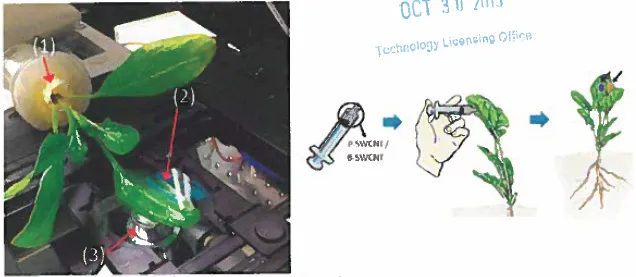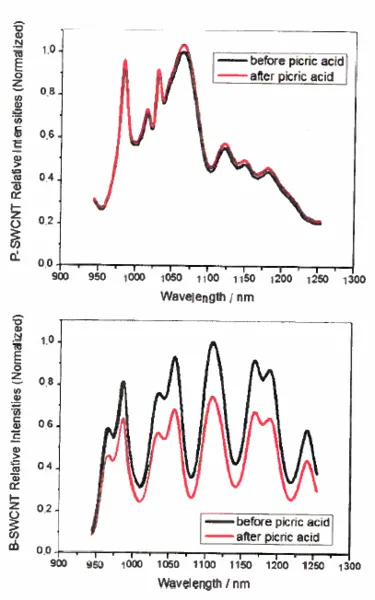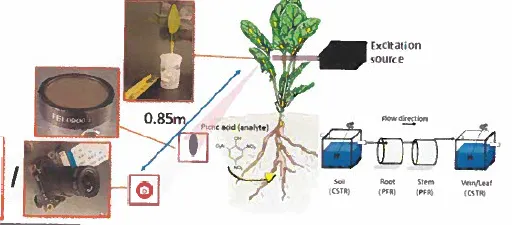The Method for the Self-Powered Detection of Nitroaromatics Using a Wild Type Plant
Nanobionic plant sensors can be utilized in a wide range of applications, including but not limited to monitoring of soil nutrient content, detection of potentially hazardous chemicals in groundwater, alerting for buried explosives, and quantification of atmospheric gas content.
Researchers
-
sensor for infrared communication using plant nanobionics
United States of America | Granted | 11,187,698
Figures
Technology
In this invention, plant sensors are created by infiltrating leaves with single-walled carbon nanotubes (SWCNTs) embedded with macromolecules. Embedded SWCNTs emit near infrared (nIR) signals in response to laser excitation at 785 nm. Exposure of these SWCNTs to other macromolecules either attenuates or shifts their emission spectrum, which can then be recorded by a standoff detector placed a meter away. In one iteration of this invention, SWCNTs embedded with bombolitin can be used to detect picric acid, a nitroaromatic compound commonly found in explosives. When picric acid is absorbed from ground water and delivered through the symplastic pathway from the roots to the plant xylem and leaves, it quickly decreases the fluorescence of the SWCNTs embedded in the leaves. SWCNT-embedded spinach leaves showed a drop in emission intensity only 5-15 mintues after picric acid exposure to the roots of the plant. Quenching of fluorescence reached its maximum at 60 minutes, when the emission intensity was only on average 85% of the original intensity. When picric acid droplets were absorbed directly into the leaf cuticles, quenching of nIR emission was detected at 10 s and fluorescence signal reached a plateau at 400 s. This invention could be extended to include different nIR detector components and hand-held signal receivers, as well as to enable surreptitious, self-powered monitoring of a wide variety of environmental conditions.
Problem Addressed
A nanobionic approach to the development of plant sensors bypasses the constraints that previous methods have experienced. In the past, plant sensors were created through genetic modifications. These approaches are limited to plants that have been extensively studied and well-understood, such as the tobacco plant; furthermore, they require long periods of time to perfect. On the other hand, nanobionic sensing mechanisms can be developed and tested very quickly, and mechanisms developed for one species are often easily translatable to another. In brief, nanobionic engineering provide results that are both more versatile and more efficiently obtained.
Advantages
- Remote, self-powered sensing
- Quickly developed
- Trans-species applicability
- Real-time monitoring capability
License this technology
Interested in this technology? Connect with our experienced licensing team to initiate the process.
Sign up for technology updates
Sign up now to receive the latest updates on cutting-edge technologies and innovations.



![Brightfield image of spinach plant leaf infiltrated with SWCNT and under 785 nm excitation. P-SWCNT and B-SWCNT indicated by black and red arrows respectively. Temporal changes in nIR fluorescence of a plant infiltrated with B-SWCNT and P-SWCNT is monitored as picric acid is transported from the roots to the leaves via the plain vascular system. While P-SWCNT nR fluorescence remains stable. the B-SWCNT intensity drops as leaves transpire a solution of picric acid (400 tiM) in 10mM KU]. tilR images were take](/sites/default/files/styles/800w/public/images/Screen_Shot_2016-04-16_at_9.59.27_AM.png.webp?itok=_vccfaU4)